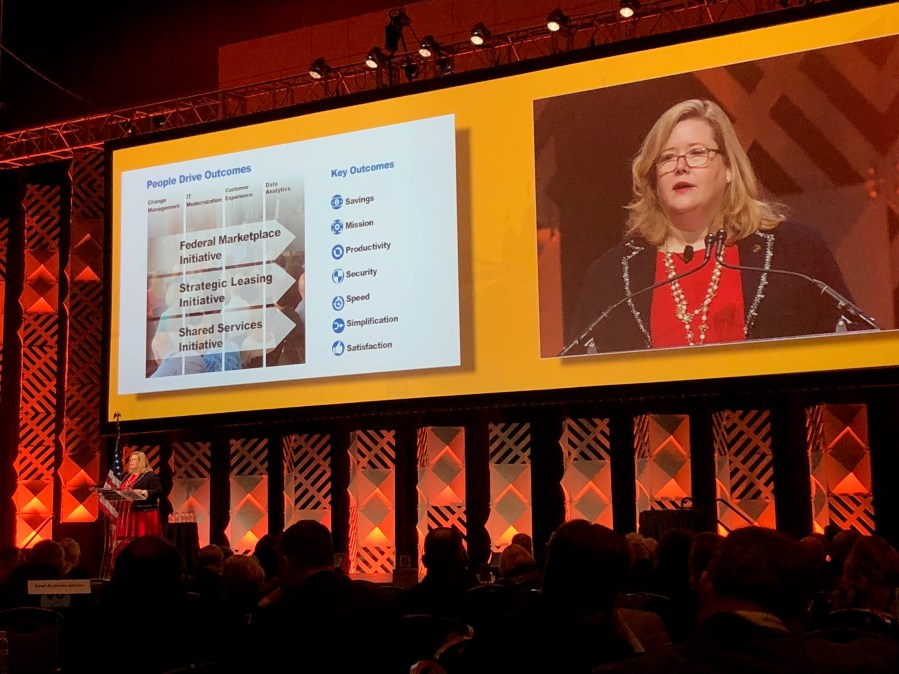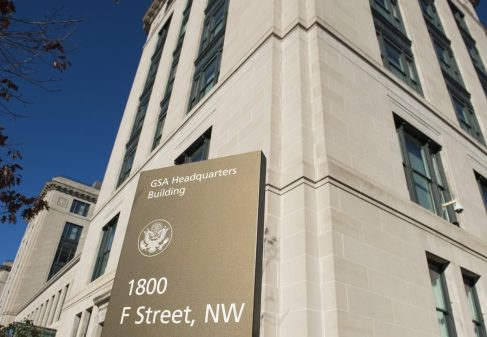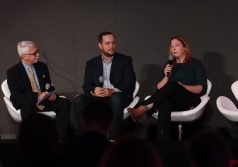GSA’s Murphy doubles down on reform efficiencies to drive transformation

With the federal government poised for one of the largest technology transformations in its history, Administrator Emily Murphy’s plan for the General Services Administration is simple in its definition, if not its execution: streamlined processes leveraged by technology to uncover new efficiencies and resources.
Murphy detailed areas where that playbook is currently being deployed across the enterprise Tuesday at the 2018 ACT-IAC Imagine Nation ELC conference, spotlighting ongoing reforms of the schedules acquisition program, increasing shared services operations and the introduction of emerging technologies to operate alongside the workforce.
One case study underway is the introduction of robotic process automation (RPA) as a way to drive savings throughout the agency’s components, such as the Public Buildings Service.
Murphy said the service is looking to deploy RPA to help augment data-based efficiencies that saved $900 million last fiscal year, aiming to match that number this year.
“There’s actually one initiative they are looking to launch this year that in and of itself will save 10,000 hours of work a week,” she said. “If you think about it, that’s five years for any individual person. That gives us that ability to reskill the workforce to high-value work.”
Another example of seeking savings to fuel transformation is in the ongoing consolidation of GSA’s acquisition schedules program, which Murphy said is designed to move GSA from providing goods and services to helping agencies find solutions through a new federal marketplace while providing contracting officers more flexibility to find them as customers.
“I think the work that [commissioner] Alan Thomas and [the Federal Acquisition Service] are doing on schedules reform is really visionary,” she said. “They’ve taken 24 schedules and are reducing those, improving the catalog — including with the new [offering] we have with unpriced service contracts — improving the ordering tools, all of which were the key complaints from our customers.
“So what does that do? That drives competition for solutions,” Murphy continued. “By having unpriced contractor services, we don’t have [a contracting specialist] thinking about the ceiling price, we instead have [them] talking about task order competition and how we do a better job of capturing past performance.”
To help find more efficiency inside GSA, Murphy said ongoing efforts to provide shared services are earmarked to try and save $2 billion as part of the President’s Management Agenda. Those efforts are progressing, she said, starting with the $2.5 billion payroll services contract inked last month.
In the next five years, with initiatives like schedules reform in place, Murphy said she would like to see a GSA that provides a range of flexible offerings that agencies can tailor to fit their missions.
“On the federal acquisition side, I’d like to think that we’d have a lot fewer vehicles,” she said. “Frankly, that takes a lot of work away from our industry partners, who are trying to submit duplicate paperwork across the agency to different contracting officers. But also by having a federal marketplace rather than having 24 schedules, you have the ability to find the solution you need rather than trying to fit it into one of the boxes that we’ve created.”
But to make it work takes investment from a workforce that administration officials have spoken a lot about preserving recently.
Murphy said that amid all of the changes ongoing at GSA is a concerted campaign to engage employees to see what practices and technology solutions will work best for them.
“It’s been a lot of big communications [efforts], but it’s been a lot of small communications also,” she said, detailing town halls, listening tours and video campaigns GSA has used. “We try, at least once a month to get a group of mid-level employees to come and have coffee with me. It’s been a great way to engage with the workforce and I think they see a lot of the opportunities that this is going to bring.”






